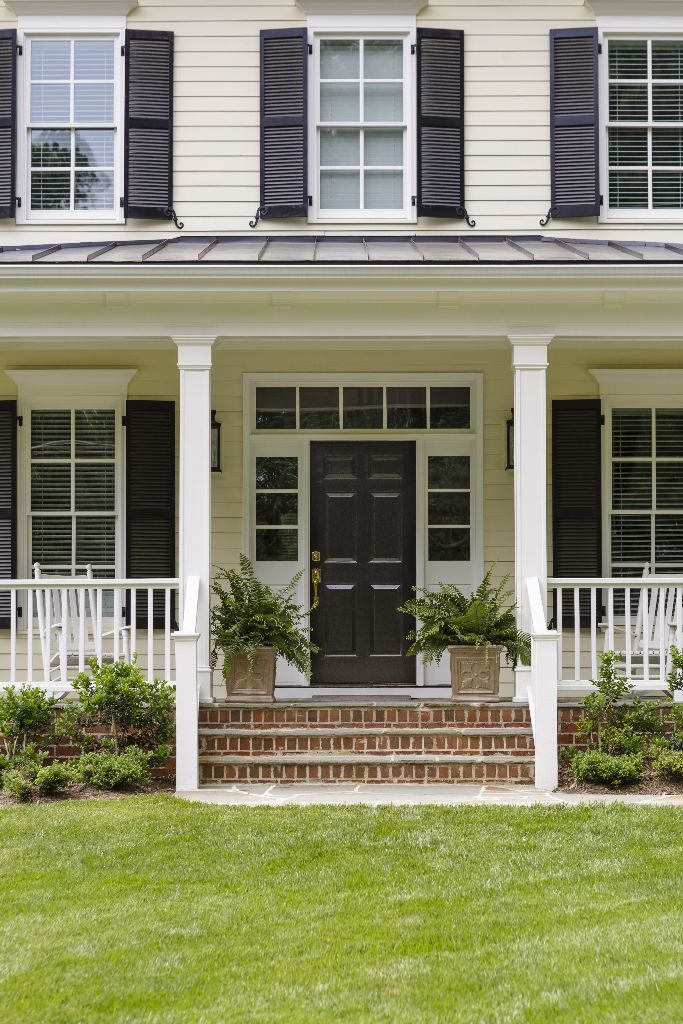
Last week I wrote an article that responds to the question, “Can an HOA reduce the amount of unpaid fees that I owe?” I have already been able to refer callers to that article for a detailed response to the question.
Today I received an email asking the second most common HOA question I get, namely, “Can the architectural committee reject a change I want to make to my property, when other homeowners previously made the same change?” Or sometimes the question is in the broader form of, “Can the architectural committee reject my completely reasonable request?”
Although this article will deal with decisions (or lack thereof) by the architectural committee, the same reasoning applies the the HOA board of directors and the decisions the directors make. As with last week’s article, again the answer to these questions is apparent if you have the proper mindset about the nature of an HOA.
An HOA is a form of government. The reason that HOAs are formed, and the reason that people buy homes in HOAs, is so that there will be an administrative body that keeps the neighborhood looking good, and prevents that weirdo across the street from painting his house purple. When you move into an HOA, you agree to live by he laws of the HOA and to subject yourself to future regulations that will be imposed by the Board.
As with any government, administrations come and go, and decisions and priorities can change with various administrations. For example, the regulations of an HOA will usually contain a color palette, dictating acceptable colors for the exterior and trims of the homes. One HOA board may decide that black shutters are beautiful and acceptable, but the next administration may ban them. Neither administration is right or wrong, it’s simply the preference of that particular board.
It’s no different than the federal government. At one time, the federal government decided that alcohol should be illegal. Citizens couldn’t simply ignore the new law, claiming it was unfair because people had been permitted to consume alcohol prior to the ban; it was the law. Then along came a new administration, that decided consuming alcohol was just fine.
Thus, the fact that 50% of the homes in the neighborhood have black shutters is no guarantee that the architectural committee must approve your black shutters. The architectural committee may have any number of reasons for reaching its conclusion. It may conclude that while black shutters are fine on a limited basis, the neighborhood now just has too many damn black shutters.
This is not a hypothetical. I was contacted by a potential client wanting to sue for the right to paint her shutters a specific color. I turned down the case for the reasons stated above, but she found an attorney willing to take her money to fight over the shutters (sadly, not a difficult thing to do). I monitored the case out of curiosity, and as predicted, she lost and was stuck paying her attorney as well as the HOA’s attorney.
Another common issue arises from height restrictions. The potential client bought a property in an HOA with the height restrictions clearly stated in the governing documents, but their blueprints for a new home were just a little over that height, and there were existing homes that exceeded the maximum height, so they were sure they would be fine. But then after the major investment in purchasing the property, they are shocked and aghast that the architectural committee won’t approve their construction plans. They want me to bring legal action and argue that the committee’s denial of the plans is somehow “arbitrary and capricious.”
I won’t say that such an argument will never prevail, because each case will turn on its own facts. The determination of what is “arbitrary and capricious” will be subjective. I can envision a circumstance where the facts are so extreme that the judge decides to override the business judgment rule (discussed below), but the circumstance has yet to present itself. A claim that the proposed home “is just a little over the height restrictions” or that previous homes exceed the height will not be sufficient to overcome the business judgment rule. Even if 90% of the existing homes are over the limit, the committee might decide that your particular property would block the views of other homes.
And so it is with the change you want to make, which you feel is entirely reasonable. It could be that the architectural committee has decided that given the location of your home, the change is not in the best interest of the neighborhood. It could even be that the architectural committee just feels that your requested change is too aggressive and would take too long to complete, thereby disturbing the neighbors.
So, just understand that when you moved into the HOA, in exchange for the promise that the HOA would not allow the guy across the street to paint his house purple, you gave the HOA the same sort of authority over you, in case you are the one who turns out to be the weirdo.
 The HOA’s governing body is protected by what is called the “Business Judgment Rule”, which is codified at section 7231 of the Corporation Code. It provides that “[a] director shall perform the duties of a director . . . in good faith, in a manner such director believes to be in the best interests of the corporation and with such care . . . as an ordinarily, prudent person in a like position would use under similar circumstances.” Subdivision (b) provides that the director is entitled to rely on information, opinions, and reports presented by certain specified persons. Subdivision (c) then provides, “[a] person who performs the duties of a director in accordance with subdivisions (a) and (b) shall have no liability based upon any alleged failure to discharge the person’s obligations as a director . . . .” The rule provides further: “no cause of action for damages shall arise against, any volunteer director . . . based upon any alleged failure to discharge the person’s duties as a director” of a nonprofit organization if that person: (1) performs the duties of office in good faith; (2) performs the duties of office in a manner believed to be in the best interests of the corporation; and (3) performs the duties of office with such care, including reasonable inquiry, as an ordinary prudent person in a like position would use under similar circumstances.” (Corp. Code § 7231.5, subd. (a).) The business judgment rule “sets up a presumption that directors’ decisions are based on sound business judgment. This presumption can be rebutted only by a factual showing of fraud, bad faith or gross overreaching.”
The HOA’s governing body is protected by what is called the “Business Judgment Rule”, which is codified at section 7231 of the Corporation Code. It provides that “[a] director shall perform the duties of a director . . . in good faith, in a manner such director believes to be in the best interests of the corporation and with such care . . . as an ordinarily, prudent person in a like position would use under similar circumstances.” Subdivision (b) provides that the director is entitled to rely on information, opinions, and reports presented by certain specified persons. Subdivision (c) then provides, “[a] person who performs the duties of a director in accordance with subdivisions (a) and (b) shall have no liability based upon any alleged failure to discharge the person’s obligations as a director . . . .” The rule provides further: “no cause of action for damages shall arise against, any volunteer director . . . based upon any alleged failure to discharge the person’s duties as a director” of a nonprofit organization if that person: (1) performs the duties of office in good faith; (2) performs the duties of office in a manner believed to be in the best interests of the corporation; and (3) performs the duties of office with such care, including reasonable inquiry, as an ordinary prudent person in a like position would use under similar circumstances.” (Corp. Code § 7231.5, subd. (a).) The business judgment rule “sets up a presumption that directors’ decisions are based on sound business judgment. This presumption can be rebutted only by a factual showing of fraud, bad faith or gross overreaching.”
Let’s say your CC&Rs permit the construction of pools, complete with permissible dimensions, and you submit a plan that completely complies with the CC&Rs, only to have it denied because your neighbor is the president of the HOA, and he doesn’t want to have to deal with the construction. Under that scenario, you would have a good case to force the HOA to permit your pool, since the HOA is acting in an arbitrary and self-interested manner; it is acting in bad faith.
If you have that type of fact pattern, then call me, because I can help under those facts. But anything short of such a fact pattern, then you are better served by working with the architectural committee to figure out what would make your proposal acceptable. If you feel that the architectural committee is being unjustifiably restrictive, then start a movement to remove the board so that a new architectural committee can be created. That’s how democracy works.
I get calls from homeowners who grow frustrated with me because I won’t agree to take their case. My reluctance is from years of experience, and because at least twice a week I get calls that go something like this:
Please help me. My request to paint my shutters black was denied by the architectural committee, but I went ahead and painted them anyway, because it wasn’t fair since other people in the neighborhood have black shutters. The HOA sued me, and I lost. Today, they went to court on a motion for attorney fees, and the court awarded the HOA $250,000. I’m going to have to sell my house to pay the $250,000 in fees. I don’t want to lose my home.
It’s very sobering to see people losing their homes over the color of their shutters, or because they think the palm trees they planted look just fine, or because they didn’t really think they could be compelled to park their car in the garage and not on the street. In any HOA litigation, the prevailing party is entitled to recover their attorney fees. If you want to go to the mat over a denial by the architectural committee, you’d better be very certain that the judge will agree with your assessment that the committee’s decision exceeds its authority. Just know that no court will substitute its opinion of what should be permitted by an HOA, over the opinion of that HOA that was elected by the members to make those sort of decisions.
 Know also that even if you win, you can lose. Say you put up a gazebo in your backyard without approval by the architectural committee, and you get a letter from the board demanding the immediate removal of the gazebo. But you’re an American, dang it, and no one is going to tell you you can’t put a gazebo in your backyard, especially since it’s not even visible to the neighbors, and everyone else has an identical gazebo. So you tell the HOA to pound sand, and you reject the requests to participate in ADR. Since the HOA Board has a fiduciary duty to enforce the CC&Rs, the HOA sues you for building a gazebo without architectural committee approval.
Know also that even if you win, you can lose. Say you put up a gazebo in your backyard without approval by the architectural committee, and you get a letter from the board demanding the immediate removal of the gazebo. But you’re an American, dang it, and no one is going to tell you you can’t put a gazebo in your backyard, especially since it’s not even visible to the neighbors, and everyone else has an identical gazebo. So you tell the HOA to pound sand, and you reject the requests to participate in ADR. Since the HOA Board has a fiduciary duty to enforce the CC&Rs, the HOA sues you for building a gazebo without architectural committee approval.
In California, it takes no less than a year for a matter to go to trial, affording the attorneys on both sides the opportunity to get into all kinds of mischief, with lots of discovery and motions. You’ll probably pay $30,000 to $60,000 to an attorney from a small firm for all the pre-trial work, or if you decided that you really needed to show the HOA who’s boss and brought in a big firm, the fees will easily be in the six figures. I was recently retained to take over a case where the client had already spent $300,000 in attorney fees, and the case was not yet close to trial.
Most HOA plaintiffs go into the action with no comprehension of the possible expense (and many attorneys fail to tell them). Take just the trial. During trial, the attorney will devote a minimum of 12 hours per day to the case. The attorney is in the courthouse for about eight of those hours, with the other four being spent preparing for the following day, preparing the jury instructions, preparing motions, etc. Absent some motion that ends the trial early (which would likely mean the plaintiff lost), a jury trial takes no less than four days. If the attorney charges $500 per hour, the trial alone is going to cost $24,000.
The firm that works for the HOA will run up a far higher bill, because the HOA isn’t particularly concerned about the costs. An HOA has, in essence, unlimited funds for litigation. If it draws all the reserves down to zero to fight the case, no problem. The board can order a special assessment. At some point such conduct might be found to be a breach of the Board’s fiduciary obligations, but are you going to spend $250,000 to make that argument? So the whole time you are running up fees, so is the HOA. Someone is in for a really bad day if they lose.
But luck is on your side. You catch the judge on a good day, and she decides you were 100% right that the HOA was being unreasonable, asking you to take down the gazebo. But you did build the gazebo without architectural committee approval, so the resolution she orders is that you must submit the plans to the architectural committee, and that the committee is not to deny your plans without good cause. Thus, you will likely get to keep your gazebo, but the HOA will be the prevailing party because it successfully compelled you to submit plans for architectural committee approval. The HOA thus brings a motion for attorney fees, and is awarded the aforesaid $250,000.
I’m intentionally adding a cynical tone, because I really want you to take this to heart. I’m not talking about you, of course, but let’s just say that sometimes people just get too full of themselves when it comes to people telling them what they can and cannot do with their property, and they don’t want to hear or consider the other side. They get lost in the minutia, and lose the forest for the trees. They want to talk about how beautiful the gazebo is, how the only reason the HOA won’t approve the gazebo is because their child beat the president’s child at a science fair three years ago, how the HOA is denying approval under the wrong section of the CC&Rs, etc., etc. But even if all of that is true, the fact remains that you built the gazebo without approval, and are therefore are in the wrong. You may win the battle over the gazebo, but it will be a Pyrrhic victory.
3 Responses to What you can do when your HOA’s Architectural Committee denies your request